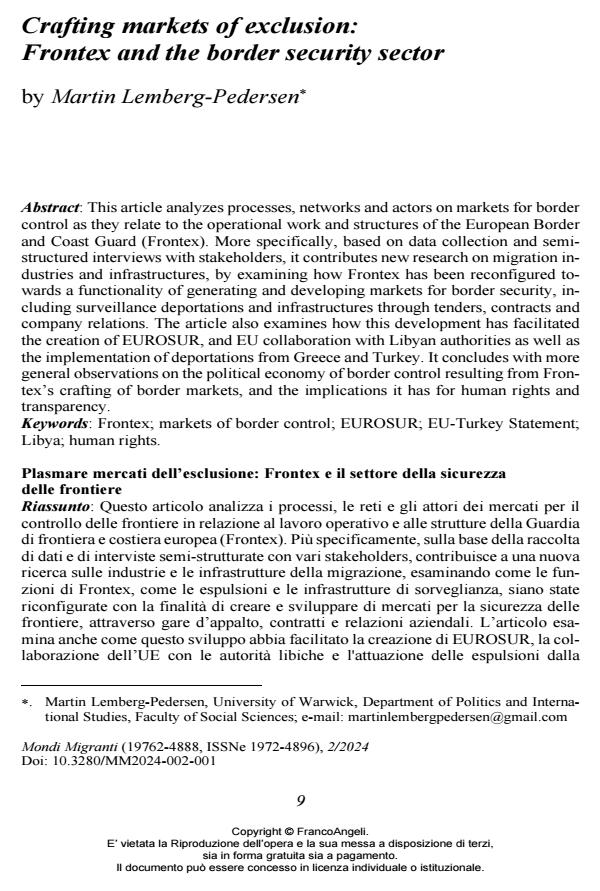Crafting markets of exclusion: Frontex and the border security sector
Journal title MONDI MIGRANTI
Author/s Martin Lemberg-Pedersen
Publishing Year 2024 Issue 2024/2
Language English Pages 28 P. 9-36 File size 329 KB
DOI 10.3280/MM2024-002001
DOI is like a bar code for intellectual property: to have more infomation
click here
Below, you can see the article first page
If you want to buy this article in PDF format, you can do it, following the instructions to buy download credits

FrancoAngeli is member of Publishers International Linking Association, Inc (PILA), a not-for-profit association which run the CrossRef service enabling links to and from online scholarly content.
This article analyzes processes, networks and actors on markets for border control as they relate to the operational work and structures of the European Border and Coast Guard (Frontex). More specifically, based on data collection and semi-structured interviews with stakeholders, it contributes new research on migration industries and infrastructures, by examining how Frontex has been reconfigured towards a functionality of generating and developing mar-kets for border security, including surveillance deportations and infrastruc-tures through tenders, contracts and company relations. The article also exam-ines how this development has facilitated the creation of EUROSUR, and EU collaboration with Libyan authorities as well as the implementation of depor-tations from Greece and Turkey. It concludes with more general observations on the political economy of border control resulting from Frontex’s crafting of border markets, and the implications it has for human rights and transparency.
Keywords: Frontex; markets of border control; EUROSUR; EU-Turkey State-ment; Libya; human rights.
- L’IA nella gestione delle frontiere dell’Unione europea: un approccio antropocentrico per tutti? Giulia Maria Gallotta, in Community Notebook. People, Education and Welfare in the Society 5.0 7/2025 pp.341
DOI: 10.61007/QdC.2025.1.273
Martin Lemberg-Pedersen, Crafting markets of exclusion: Frontex and the border security sector in "MONDI MIGRANTI" 2/2024, pp 9-36, DOI: 10.3280/MM2024-002001